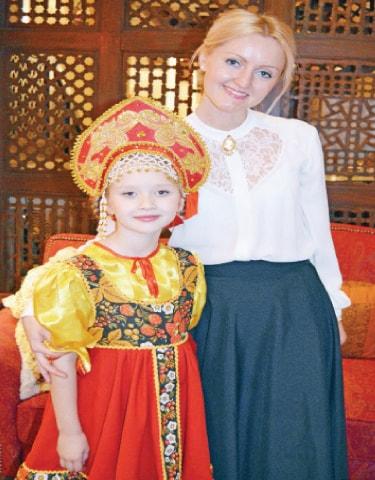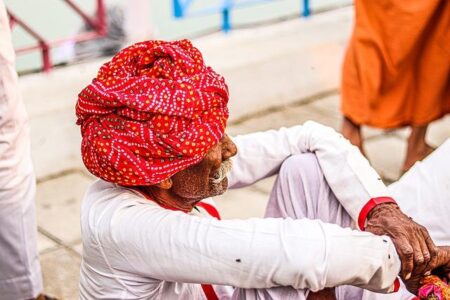A Russian mother who chose to live with her two daughters in a remote cave in India has spoken out to defend her unconventional decision. Describing their time in isolation as a period of happiness and contentment, she challenges prevailing assumptions about their lifestyle. The family’s unusual story, which has drawn international attention, raises questions about cultural choices, parenting, and the search for simplicity in an increasingly complex world.
Russian Mother Explains Choice to Raise Children Amidst India’s Remote Wilderness
Choosing a life vastly different from urban norms, the Russian mother emphasized that her decision was deeply rooted in providing her daughters with a unique and fulfilling upbringing. Far from the noise and distractions of city life, she found solace and happiness amidst the Indian wilderness, where simplicity and nature shaped their daily routine. She explained that their days were filled with exploration, learning from the environment, and bonding through shared experiences that urban settings rarely offer.
Addressing concerns about isolation and safety, she highlighted several benefits her children enjoyed living in the remote cave residence:
- Uninterrupted connection with nature fostering mindfulness and creativity
- Freedom from digital distractions, encouraging active play and imagination
- Close-knit family ties strengthened by cooperative living
- Learning survival skills and self-reliance in a hands-on environment
| Aspect | Benefit |
|---|---|
| Environment | Peaceful and natural surroundings promoting wellbeing |
| Education | Experiential learning through nature and culture |
| Lifestyle | Minimalist living encouraging sustainability |
Inside the Daily Life of a Family Living in Isolation in a Mountain Cave
Day-to-day life in the secluded cave is marked by a rhythm deeply connected to nature’s pace. The mother, Valentina, rises with the sun alongside her two daughters, tending a small vegetable patch near the cave entrance where they cultivate potatoes, tomatoes, and spinach. Meals are primarily sourced from foraged fruits and the modest garden, cooked on a traditional clay stove. Despite the lack of modern amenities, the family has fashioned a living space heated by a stone firepit and furnished with homemade blankets and sturdy wooden shelves filled with books and school supplies. Their days blend moments of study, meditation, and forest walks, shielded from the noise and distractions of the nearby town.
- Morning: Gardening and breakfast preparation
- Afternoon: Home schooling and drawing lessons
- Evening: Storytelling by the fire
The family’s isolation has frozen a timeless bubble where technology takes a backseat to hands-on skills and emotional closeness. Valentina emphasizes the vital role of simplicity in their happiness. The daughters, aged 8 and 10, speak of their daily adventures as opportunities to discover wildlife, learn survival techniques, and engage creatively with the world around them. Their home, though stark by conventional standards, embodies a sanctuary of peace and connection, defying modern expectations of childhood and motherhood.
| Activity | Time Spent | Purpose |
|---|---|---|
| Gardening | 2 hours | Food cultivation & responsibility |
| Schooling | 3 hours | Education & intellectual growth |
| Nature Walks | 1.5 hours | Exploration & physical health |
| Storytelling | 1 hour | Bonding & cultural transmission |
Experts Weigh In on Challenges and Safety Measures for Remote Living in Harsh Environments
Experts in remote habitation highlight numerous challenges faced by families choosing to settle in inhospitable terrains like caves, especially in regions with extreme weather conditions. Psychological impacts, limited access to healthcare, and potential isolation-induced stress top the list of concerns. Dr. Anjali Mehra, a specialist in environmental psychology, points out that while the desire for solitude and escape is natural, “sustainable remote living demands rigorous preparation, including emergency communication plans and mental health coping strategies.”
Safety measures, meanwhile, include comprehensive risk assessments and constant monitoring of environmental conditions. The table below outlines recommended precautions for families considering similar lifestyles:
| Risk Factor | Recommended Safety Measure |
|---|---|
| Harsh Weather | Insulated shelters and thermal clothing |
| Limited Medical Access | Basic first aid training and stocked medical kits |
| Nutrition & Water Supply | Solar water purifiers and non-perishable food stores |
| Communication Barriers | Satellite phones or radio devices |
| Mental Health | Regular check-ins with professionals via telecommunication |
In Conclusion
The story of the Russian mother and her two daughters choosing a remote cave in India as their home highlights a unique and deeply personal decision, driven by a desire for simplicity and togetherness away from the complexities of modern life. While their choice may seem unconventional to many, the family’s contentment speaks to the diverse ways people seek happiness and fulfillment. As their story gains international attention, it also raises broader questions about cultural integration, solitude, and the lengths to which individuals will go to protect their family bonds.




